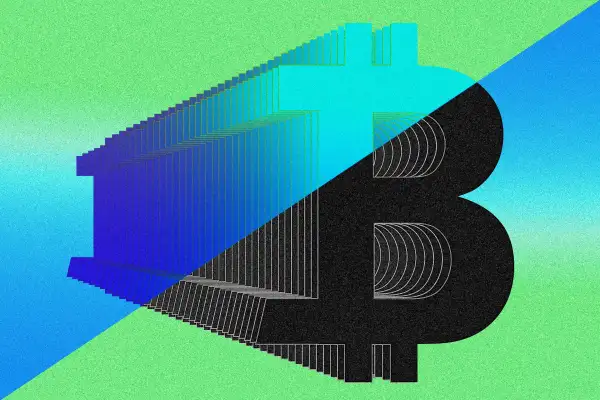As Bitcoin's 'Halving' Date Approaches, Is It a Good Time to Invest in Crypto?
Money is not a client of any investment adviser featured on this page. The information provided on this page is for educational purposes only and is not intended as investment advice. Money does not offer advisory services.

After a 2023 spent rebounding from a dismal bear market the year before, cryptocurrency is back into bull territory. There's no better evidence of that than bitcoin's recent performance.
The most popular cryptocurrency broke its all-time high in March, surging to $73,750. Better yet, analysts believe that growth will continue this year, thanks to the upcoming halving date.
Bitcoin prices have quadrupled since January 2023, with much of the recent gains attributed to the hype around two long-awaited events in 2024. The first of these, the approval of 11 spot bitcoin ETFs by the U.S. Securities and Exchange Commission, occurred in January and resulted in billions of dollars in inflows. Just a month after this news broke, bitcoin surpassed $50,000, a value not seen by the asset since 2021. Now, prices have reached a new all-time high and are hovering about $70,000.
The next event, slated for mid-April, will slow the production of new bitcoin, which could ostensibly push the asset’s price even higher. Here’s what crypto investors need to know about the upcoming bitcoin halving.
What is bitcoin halving?
Bitcoin halving is an event that has occurred about every four years since the cryptocurrency's inception in 2009. Halving dates won’t directly affect bitcoin holders, but they involve actions behind the scenes that could bode well for the asset’s future value.
In a nutshell, halving has to do with bitcoin mining — the process by which transactions are verified on the blockchain and new bitcoins are entered into circulation. Miners are computers that create bitcoin, which happens by solving complex mathematical equations. Anybody from a hobbyist miner using their home computer to giant corporations with barns full of mining rigs can use their computing power to create bitcoin. When one of these computers solves a problem, the network rewards the miner with the newly minted bitcoin, thereby growing the total number of coins in circulation.
However, there is a finite number of bitcoins that can be mined — 21 million to be precise. With 19.6 million currently in circulation, only 1.4 million are yet to be mined. When a halving event occurs, the bitcoin protocol cuts in half the number of coins awarded to successful miners. Since 2020, miners have received 6.25 bitcoin for solving a problem. When the next halving occurs, miners will only receive 3.125.
The result is that after each halving, the computing power required to create new bitcoin doubles. In theory, the steep drop in production will cause the asset’s value to appreciate, given that demand for the asset remains constant or grows.
When is the next bitcoin halving?
One unique feature of bitcoin halving is that while it occurs about every four years, there’s no set date for when the next halving will come. Rather, it happens after 210,000 blocks on the bitcoin blockchain have been filled with data. While it takes about four years to complete this much mining, the specific day it will occur cannot be accurately predicted until the event is fairly close to happening. That said, experts estimate that the next halving will happen on or around April 19, just weeks from now.
These halving events will continue about every four years until the 21 million bitcoins that make up the total supply are mined. It’s estimated that it will take until the year 2140 for this to happen.
Is now a good time to buy bitcoin?
With the bitcoin halving close at hand, is now the time to invest in bitcoin? Previous instances have established a precedent for price increases; in the months following each of the three past halvings, the asset has appreciated considerably. The last halving, which occurred in May 2020, saw the cryptocurrency add $2,000 to its value in the proceeding three months. However, the reasons why bitcoin prices rise or fall are complicated and don't always make sense; throughout that year, the coin skyrocketed from around $7,194 to $32,810 on little news.
Experts are largely bullish in the year to come for cryptocurrency, and the context of bitcoin spot ETFs and the halving help to explain why. Martin Leinweber, digital asset product strategist at MarketVector Indexes, tells Money that the demand for bitcoin products is extremely high.
“Investors had previously stated that achieving $5–$10 billion USD [in net inflows to bitcoin ETFs] in the first three months would be an unprecedented success,” he says, adding that many institutions have seen inflows exceed these predictions. Now, BlackRock alone holds almost $17 billion in assets under management.
Leinweber uses this point to illustrate that the demand for bitcoin already vastly outpaces the available supply.
“A broader range of investors are dedicating a portion of their assets to bitcoin,” he says. “Large portfolio managers are now incorporating this new asset class into their allocations.”
With this already happening, a 50% slowdown in production of new bitcoin after the halving will only further stoke demand. There are obvious expectations for price increases around the halving, but investors shouldn't expect a guaranteed moonshot.
“Buying before the halving has risks of volatility,” says Dan Weiskopf, co-portfolio manager of ETF company Amplify's Transformational Data Sharing ETF. Weiskopf says that the momentum already generated by the recent bitcoin ETF approvals are likely to keep carrying prices upward ahead of the halving, but he reminds investors that they should be patient and expect volatility. “[Do] not expect every day to be a straight line, up 3%-5%,” he says.
More from Money:
Why Some Crypto Experts Predict Bitcoin Will Soar to Record Highs in 2024
10 Best Crypto Wallets of February 2024
Bitcoin Spot ETF Approval Could Get 'Millions More Investors' Into Crypto

